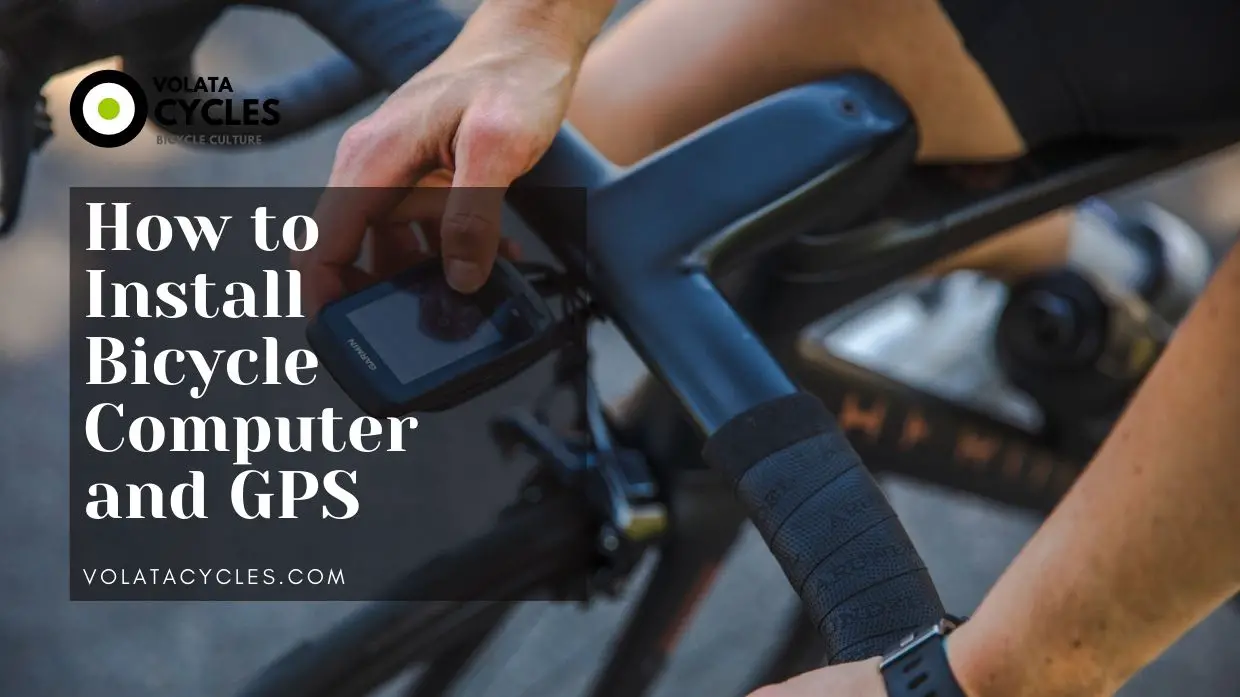Bicycle computers can be an excellent tool for any cyclist. They allow you to track how far and how fast you are cycling, as well as how many calories your trip burned. Of course, if you want to benefit from this technology, you will need to install the computer on your bike first! In this blog post, we will do just that with step-by-step instructions and photos.
Feedback is a fantastic encouragement to get on your bike, which is why cycle computers are an essential component of every cyclist’s equipment. Knowing how fast and how far you’ve gone, as well as how much elevation you’ve gained – some computers offer this option – adds another layer to your journey.
It’s also beneficial to understand where you’re going – it motivates you to try new routes and discover. GPS gadgets, as well as many of the functions performed by cycle computers, do so.
So if you’re looking to install a bicycle computer and GPS, look no further – we’ll show you how below!
You’ll need the following tools:
- Screwdriver or Allen keys;
- To trim tie wraps, use cable cutters or scissors.
Setting up a cycle computer
Step 1
The magnet should be put on a spoke, closer to the hub than the rim. Because the hub spins more slowly than the rim, the sensor has more time to detect it. Secure it according to the manufacturer’s instructions. Magnets are available in two parts that fit around a spoke or as a whole that clips on.
- A spoke rim is held in place by one side of a magnet. Open it (inset), lay one half on one side of the spoke, and then attach the other half to keep it in place.
Step 2
Attach the sensor to your bike. The sensor is secured with tie-wraps to the fork. Follow the instructions carefully and verify that the right side of the sensor is facing the spokes.
- Place the sensor over the magnet. The sensor is frequently accompanied by a light indicator that has detected the magnet. After several passes of the magnet near the sensor, adjust it until the light flashes.
Step 3
Attach the computer mount to your handlebar. Tie-wraps are used to hold this mount in place, but others may be secured with a clamp and bolt if necessary. Make sure the mount is secure.
- If you have a computer with a wire connecting the sensor and mount, tie-wrap it to your fork, then wrap it around the front-brake cable-outer until level with the handlebar. Allow enough stretch not to get caught on something while riding.
Step 4
Attach the handlebar mount to your bike by following the manufacturer’s instructions, then program your computer as directed.
- It’s worth double-checking that the computer’s heart-rate function works when you’re seated on the bike if it has one. If it doesn’t, you may have to mount the computer on your bike’s stem to bring it within range of the sensor, which you wear on a chest strap.
Installing bicycle GPS tracking device
Step 1
Attach any ancillary equipment first. The pedal-cadence sensor on this GPS requires a magnet to be added to the left-hand crank. Then the sensor is tied to the left-hand chainstay.
- Before you go any further, double-check that the sensor and magnet of any ancillary equipment are aligned.
Step 2
Attach the GPS mount to either the handlebars or the stem.
- This is a single-point mount with an elastic loop rather than bolted clamps.
- Set the GPS hardware according to the directions that came with it or the messages on the screen when it is turned on. After that, attach the gadget to the mount (inset) using a clip (outset).
Final Words
Installing a GPS and Cycle Computer can be very satisfying for any cyclist. Whether you’re looking to track your distance, time, or elevation gains, these devices will motivate and educate cyclists of all levels. Our blog post has shown you how to install both cycle computers and GPS units in the simplest way possible so that you, too, can enjoy this valuable information on your bike ride! If you have any questions about installing a bicycle computer or GPS, let us know below in the comments section. We’ll do our best to get back with an answer as soon as possible.

